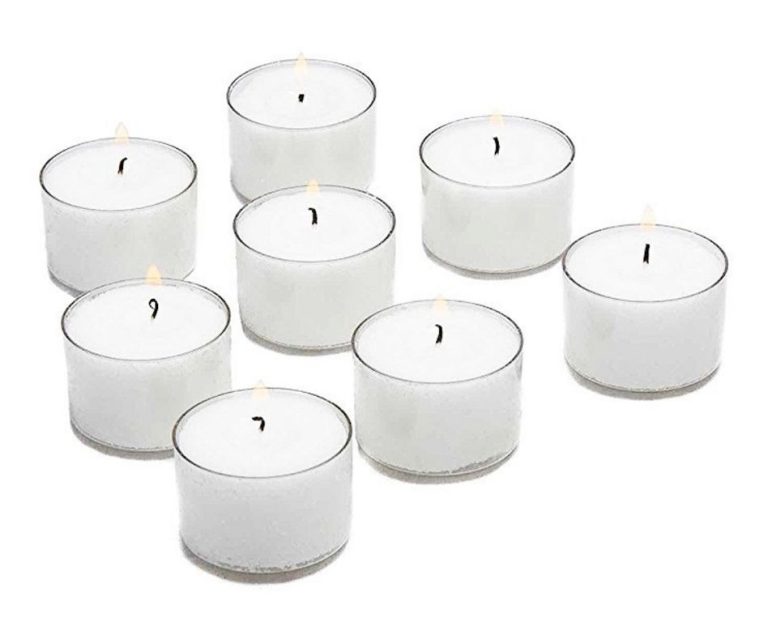Do Bath And Body Works Candles Lose Their Scent?
Smells Like Nostalgia
The scent of pumpkin spice brings me back to carefree autumn days. I light my Bath & Body Works pumpkin pecan waffles candle and – for a moment – I’m a kid again jumping in leaf piles. But faster than you can say “trick or treat,” that cozy aroma fades away after just a few burns. What gives?
We rely on candles to set a mood, yet their fragrances never seem to last as long as promised. Those Bath & Body Works 3-wicks claim to provide 30-45 hours of scent. But is that really true? Do their candles lose their spicy, sweet, and fruity aromas over time? Let’s sniff out the facts.
Candle Ingredients
What gives candles their scents are essential oils and fragrance oils that are added to the wax. Essential oils are extracted from plants and capture the natural smell and benefits of the source. Popular essential oils used in candles include lavender, eucalyptus, peppermint, and tea tree. Fragrance oils are synthetic oils created in a lab to mimic natural scents or produce unique new scents. They allow for consistent, stronger scents at a lower cost compared to essential oils. According to the National Candle Association, most scented candles contain a combination of natural and synthetic fragrances derived from essential oils or fragrance oils (Elements of a Candle: Fragrance, https://candles.org/elements-of-a-candle/fragrance/).
Common candle scent ingredients include fragrance oils like vanilla, floral scents, fruity scents, woodsy scents, spicy scents, and “masculine” scents like tobacco and leather. Essential oils commonly used include lavender, eucalyptus, lemon, peppermint, and tea tree (Most common candle scent ingredients, https://gocandles.co/blogs/article/what-are-the-best-ingredients-in-a-scented-candle). Some consumers prefer candles scented mainly with essential oils rather than synthetic fragrance oils.
Candle Wax Types
Different types of candle wax can affect how strong the scent throw is. The main waxes used in candle making are paraffin, soy, and beeswax. Paraffin wax is derived from petroleum and is the most commonly used candle wax. It provides the strongest scent throw compared to other waxes. Soy wax is made from soybeans and is a renewable and environmentally friendly option, but does not allow fragrance oils to open up and release aroma as well as paraffin. Beeswax candles have a light, natural honey aroma, but essential oils do not adhere as strongly to beeswax so the scent throw is more subtle.
According to candle making experts, paraffin wax still provides the best scent throw compared to soy waxes and other natural waxes like beeswax (Source). The molecular makeup and density of paraffin allows fragrance oils to fully open up and disperse their aromas efficiently. While soy candles can have excellent scent throw as well, testing has shown paraffin to be superior when it comes to letting a candle’s fragrance shine.
Wick Issues

The wick is one of the most important factors that affects how strong the hot throw (scent intensity) of a candle will be. The right wick size allows for full melt pool coverage so more fragrance oil can be released into the air. A wick that is too small may provide an incomplete melt pool and weaker scent. On the other hand, an oversized wick can get too hot, releasing scent ingredients in the fragrance oil that tend to rise quickly, resulting in an initial strong throw that fades faster. Testing wick sizes to find the optimal one for each particular candle design is key.
According to CandleScience, wick recommendations are typically based on a 7.5% fragrance load without dye, but testing may still be required as factors like jar shape, wax type, and additives can all impact performance. They note it’s helpful to think of wick sizing as a sliding scale.Village Craft and Candle also states the easiest way to determine what wick size you need is by testing different wicks and monitoring melt pool coverage and hot throw.
Sources:
https://www.candlescience.com/learning/choosing-the-right-wick-size/
https://villagecraftandcandle.com/blogs/news/what-are-the-different-types-of-candle-wicks
Curing Process
The curing process is critical for ensuring candles maintain their intended fragrance and performance. After candles are poured into their containers, they undergo a curing period which allows the wax to fully harden and stabilize. According to Armatage Candle Company, the general timeframe for curing soy wax candles is 1-2 weeks, with 2 weeks being ideal. Late Harvest Candle Co. also recommends a minimum 2 week cure time before lighting candles to allow them to properly set up.
During the curing process, the candle wax undergoes a molecular transition as it solidifies and contracts slightly. This allows the wax to pull away cleanly from the sides of the container instead of sticking. Proper curing also enables the fragrance oil to set into the wax so it will burn evenly when the candle is lit. If candles are lit too soon, wet spots in the wax can adversely affect fragrance throw. A full cure allows the wax, wick and fragrance to stabilize for optimal performance. Rushing this process can negatively impact scent retention and burn quality.
Sources:
https://armatagecandlecompany.com/blog/candle-curing/
http://www.lateharvestcandleco.com/importance-of-curing.html
Storing Candles
Proper storage can help preserve the scent of candles. According to the Harlem Candle Company, covering candles when they are not in use can preserve the scent and keep dust out (source). They recommend storing candles with lids to prevent scent loss. Soy Delicious also suggests storing candles away from heat sources like ovens, appliances and direct sunlight to maintain fragrance (source). Putting candles in airtight containers is another recommendation from Smells Candle Company to prevent the wax from softening and the scent from dissipating (source).
Burn Time
The length of time a candle burns, known as its burn time, can affect its scent throw over time.[1] When a candle burns, the heat from the flame causes the wax to liquify and the fragrance oil to evaporate into the air. This process continues as long as the candle remains lit. However, not all of the fragrance oil will be released during a single burn. The longer a candle burns during one session, the more fragrance oil will be emitted. Very long individual burns can release a large amount of the candle’s fragrance at once, making subsequent burns release less scent.
Testing by candle makers has shown that shorter burn times of 1-2 hours per session allow the candle fragrance to last through more burns. [2] Limiting each burn prevents too much fragrance from being emitted at once. This allows the candle to retain scent for a longer period of time when burned repeatedly. In contrast, letting a candle burn for 4 hours or longer in one sitting can accelerate scent loss in future burns. The optimal burn time will depend on the size and wax type of each candle. But in general, shorter and more frequent burns will maintain fragrance intensity for more uses.
[1] https://nomadnoe.com/blogs/the-blog/understanding-candle-longevity-burn-time-and-beyond
[2] https://thompsonferrier.com/blogs/journal/everything-you-need-to-know-about-candle-burn-times
Individual Noses
People’s noses detect scents differently. According to research, the human nose can distinguish at least 1 trillion different odors (https://www.nature.com/articles/nature.2014.14904). Our sense of smell is carried out by scent receptors that send signals to the brain. While the structure is similar, each person has a unique set of scent receptors tuned to detect different odors (https://www.nih.gov/news-events/nih-research-matters/how-nose-decodes-complex-odors). This means that two people may perceive the same scent differently. One person may detect certain notes more strongly, while another person may not smell some top, middle, or base notes at all.
Since people have varying sensitivities and preferences for scents, the same Bath & Body Works candle may smell stronger or weaker from one nose to another. Some noses may continue detecting the fragrance throw over time, while others may notice the scent fading earlier. The individual characteristics of each nose play a key role.
Aging of Scents
Candle scents fade over time due to the natural decay of the fragrance oils and essential oils used to create the scents. Some notes decay faster than others. For example, top notes, which provide the initial aromatic impression, tend to fade first. According to Sojourn Company’s blog[1], top notes like citrus, green notes, and light florals decay the fastest. On the other hand, base notes like vanilla, amber, and musk persist the longest and continue emitting scent as the candle burns down.
Candle makers can formulate their candles to extend scent life by balancing the fragrance with more base notes that endure over time. However, all notes eventually decay as the candle ages. Proper storage in a cool, dry place away from sunlight can help slow the fading process. But gradually over months and years of storage, the scent will diminish before the candle is ever burned. Once burned, the heat accelerates the decay even more. In the end, scent has a finite lifespan and candles inevitably lose potency over time.
[1] https://sojourncompany.com/blog/do-candles-lose-their-scent-over-time/
Conclusion
In summary, there are a few key factors that determine whether Bath & Body Works candles will lose their scent over time:
– Candle wax type – paraffin candles hold fragrance better than soy or vegetable-based waxes.
– Wick issues like “sooting” can block scent throw.
– Proper curing and storing of candles allows fragrance to stabilize.
– Individual noses experience smell differently, especially as we age.
– Essential oil scents can fade faster than synthetic fragrance oils.
The verdict: Yes, Bath & Body Works candles can lose potency of scent over time, especially if not stored properly. However, the scent loss is gradual and many continue emitting noticeable fragrance for weeks or months of burn time. Proper curing and storage helps maximize scent longevity. But the joy of a candle is experiencing the scent while burning, which Bath & Body Works candles continue providing during each use.






